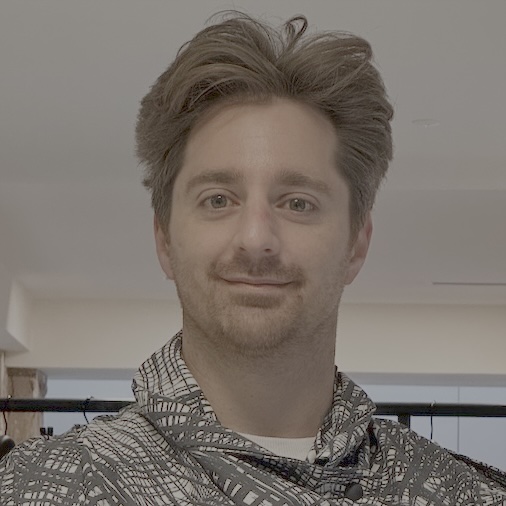Learning to Code Between Night Shifts
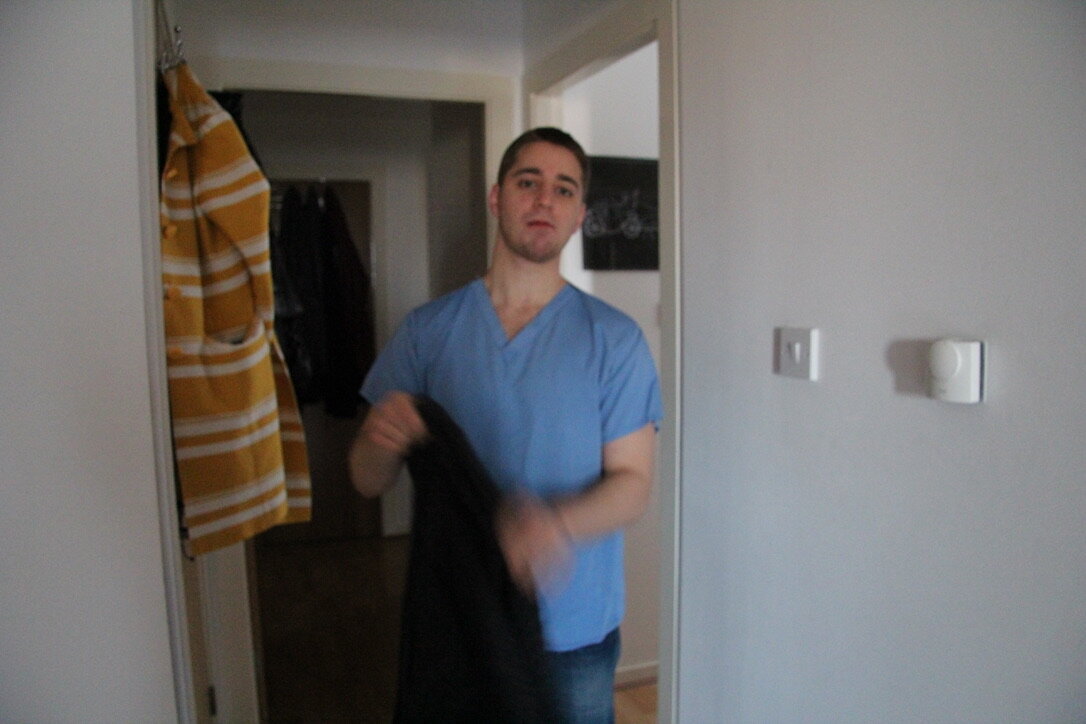
Before the night shift, Glasgow 2010

Multiple bleepers era
I'm Dr. Adrian Raudaschl, a physician turned product manager. I started out in Glasgow's NHS, rotating through general medicine, A&E, surgery, obstetrics, and gynaecology. Night shifts meant juggling five emergencies at once with multiple bleepers around my neck. Medicine taught me to stay calm under pressure, make evidence-based decisions, and always remember who you're serving: the people who need help.
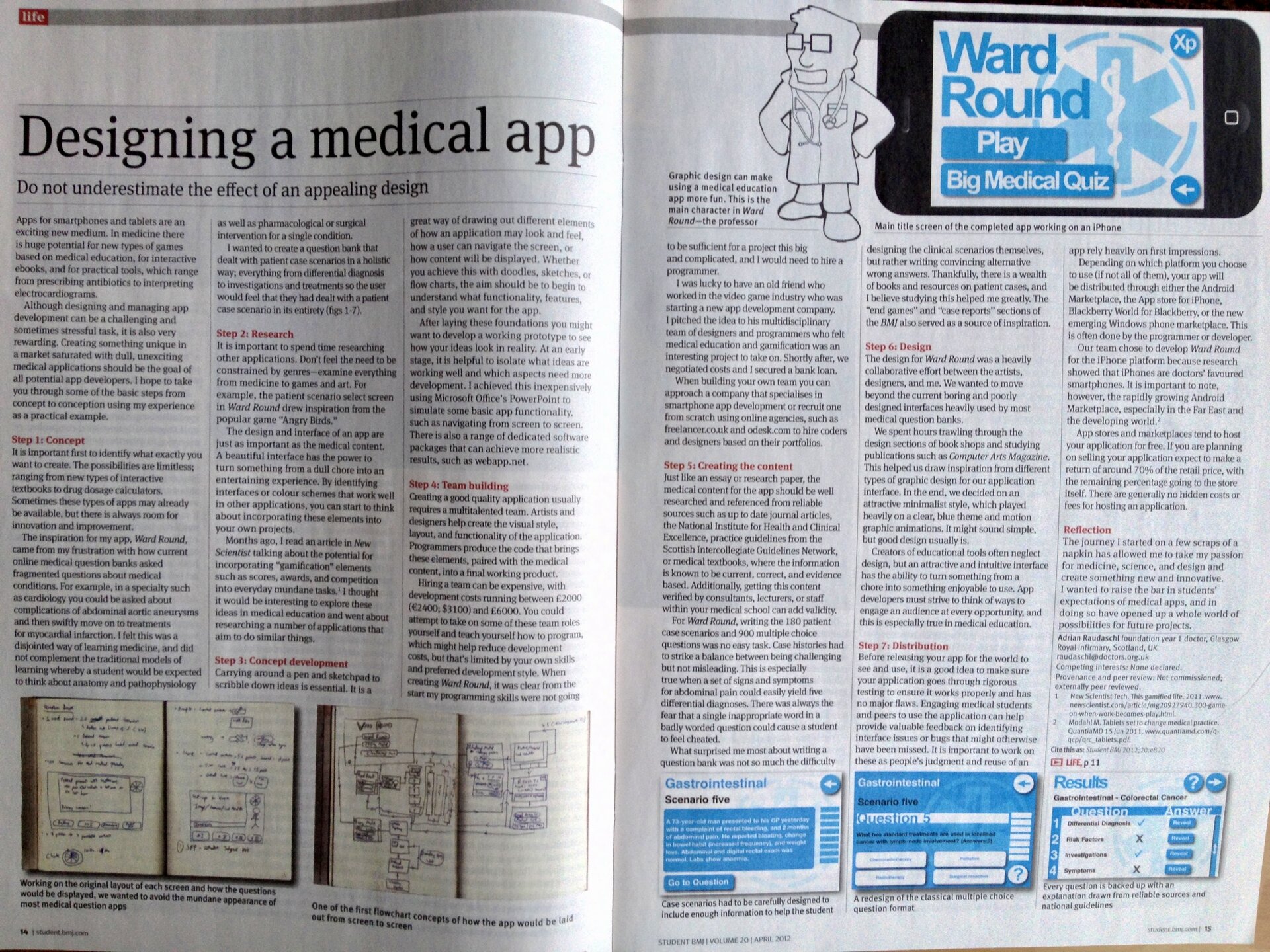
Ward Round app featured in BMJ
Between shifts, I returned to programming for the first time since childhood. I'd put technology on hold during medical school and clinical training, but now I was self-teaching Objective-C with dreams of creating something for the iPod Touch. Ward Round emerged — an app to help junior doctors prepare for stressful teaching sessions.
It wasn't glamorous, but it helped other doctors. It even won me the Junior Doctor Representative of the Year Award from the Royal College of Physicians & Surgeons of Glasgow. More importantly, this became a turning point: technology could scale impact beyond one patient at a time. That realisation was the bridge from medicine to product management. The same motivation—helping people do important work—just at a different scale.
Explaining Cancer Through Superhero Comics
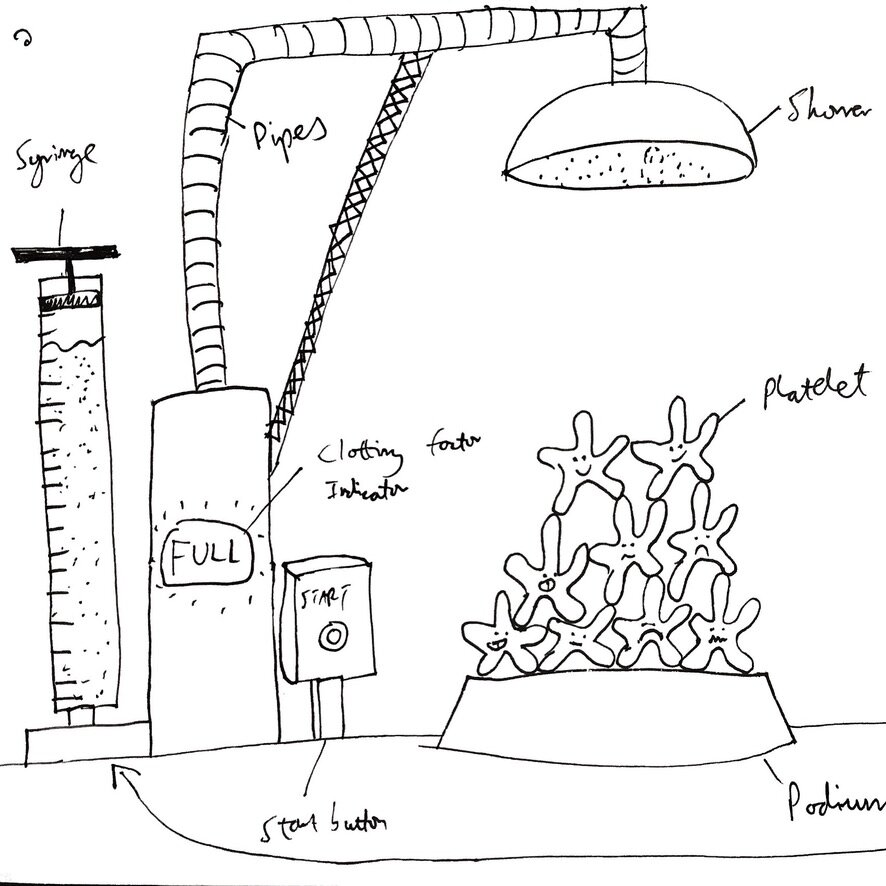
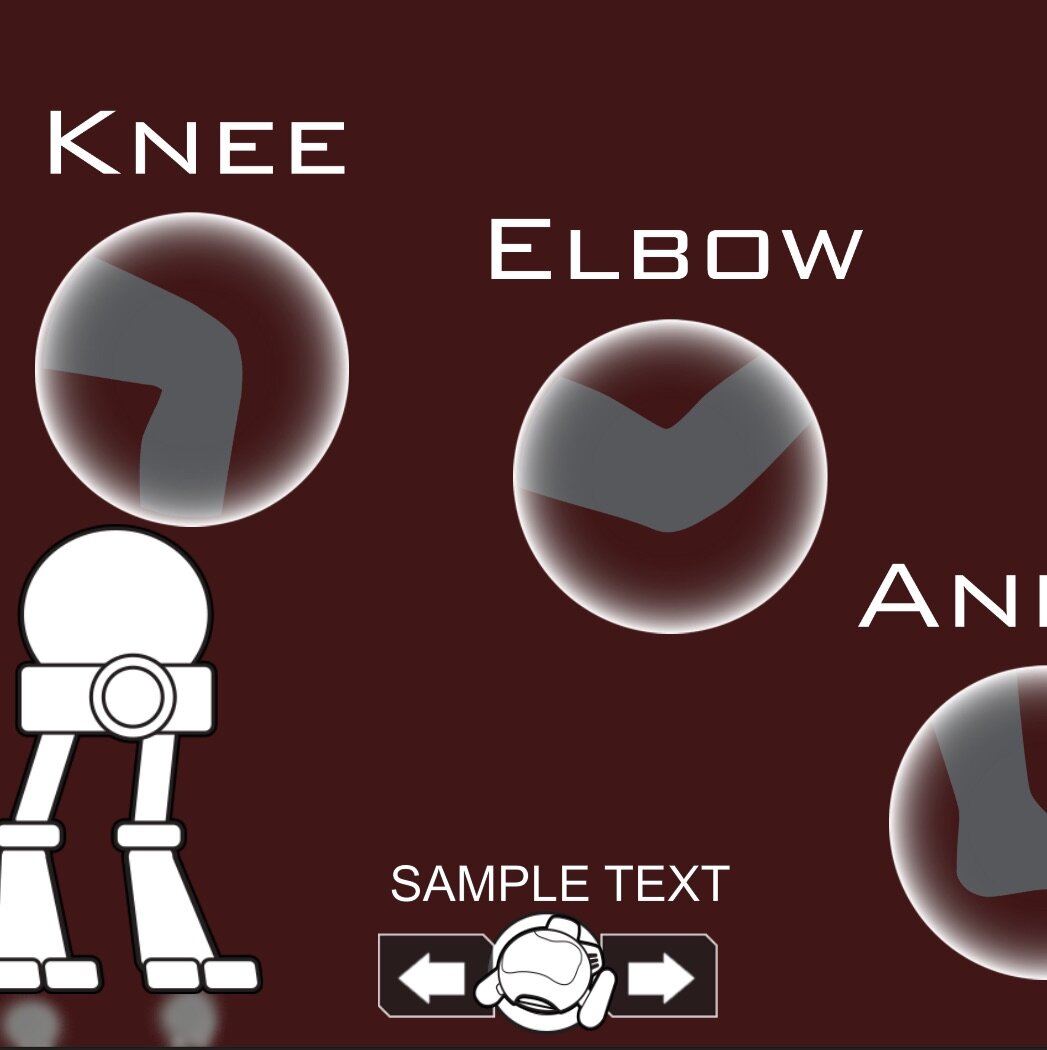
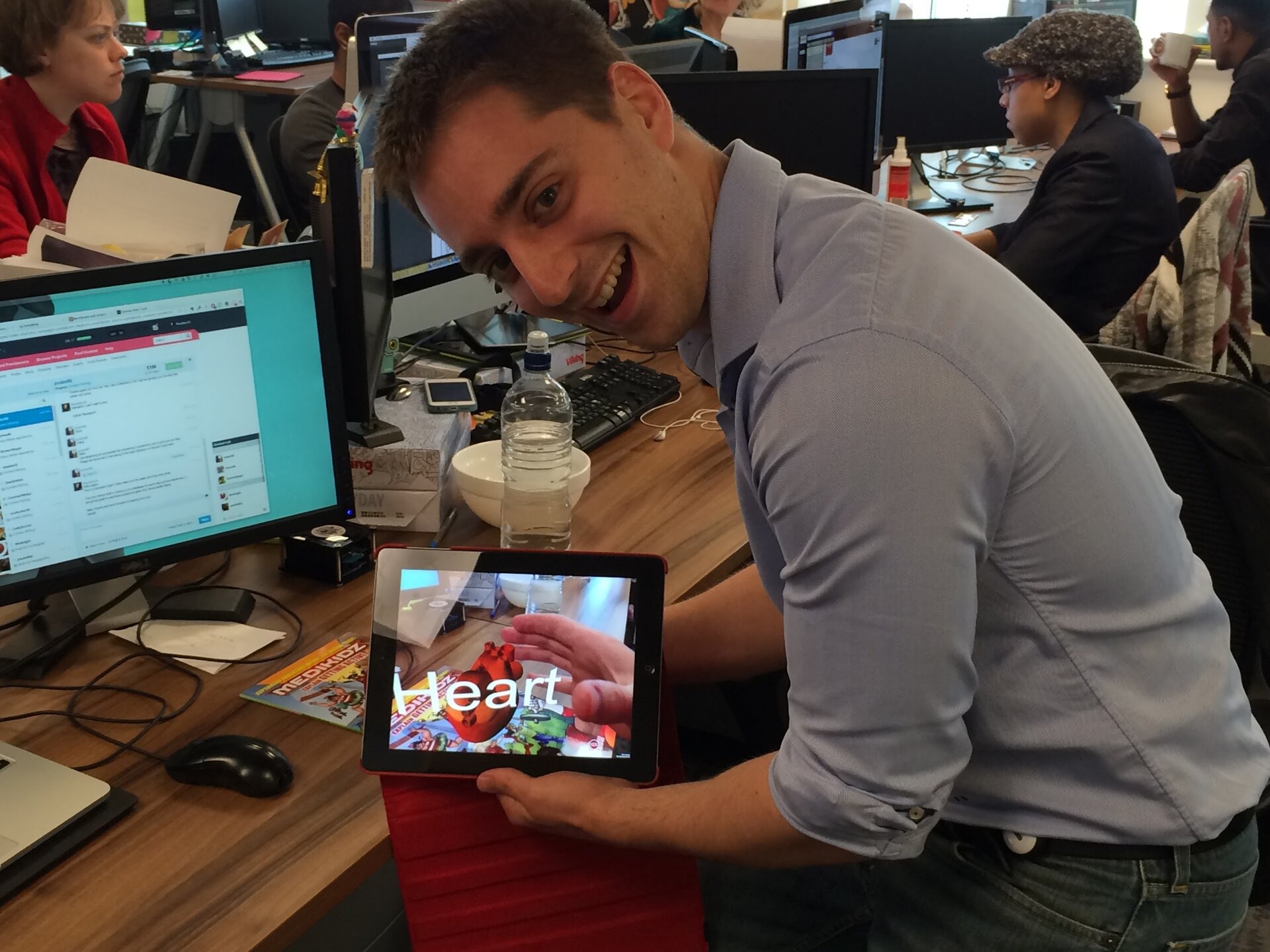
From there, I joined Medikidz, where we set out to explain complex health concepts to children. We created superhero comics, digital games, and even clinical trial adherence software for kids — bringing clarity (and a little fun) to some of medicine's toughest topics. We were experimenting with augmented reality for insulin education long before AR went mainstream.
This chapter taught me how to adapt communication for any audience, whether a seven-year-old learning about chemotherapy or an executive trying to understand AI.
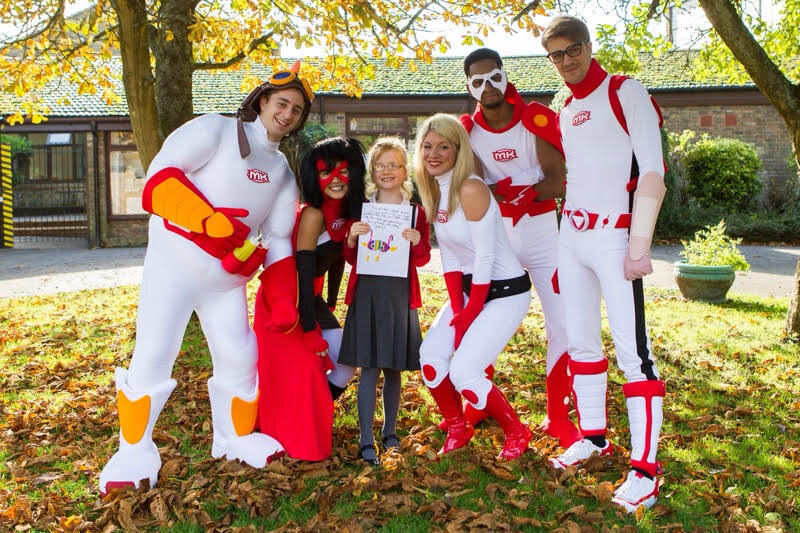
Bringing medical education to life - the Medikidz team at a school event
Rebuilding Search from Scratch
At Mendeley (part of Elsevier), I came in to improve acquisition and onboarding. This was my masterclass in understanding academic workflows — how researchers discover, store, and use papers to write their own. I learned proper product management: A/B testing, cross-team collaboration, implementing onboarding flows that actually improved retention.
My first major project was rebuilding Mendeley's search from the ground up. The hypothesis was simple: better search meant better acquisition and retention, giving users a genuinely valuable tool to build their research libraries. This deep dive into search technologies would later prove invaluable for my AI work.
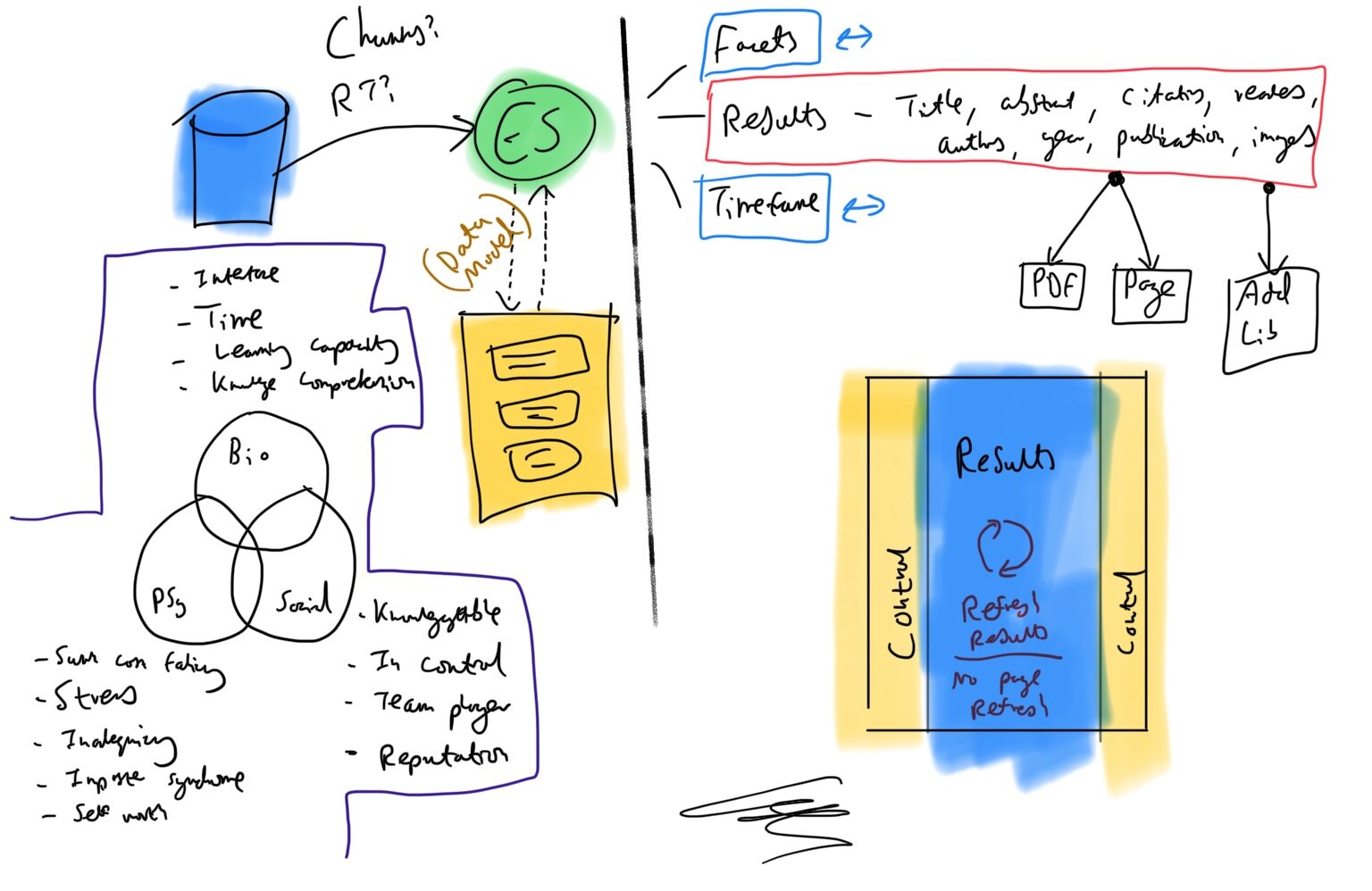
Initial interface sketches
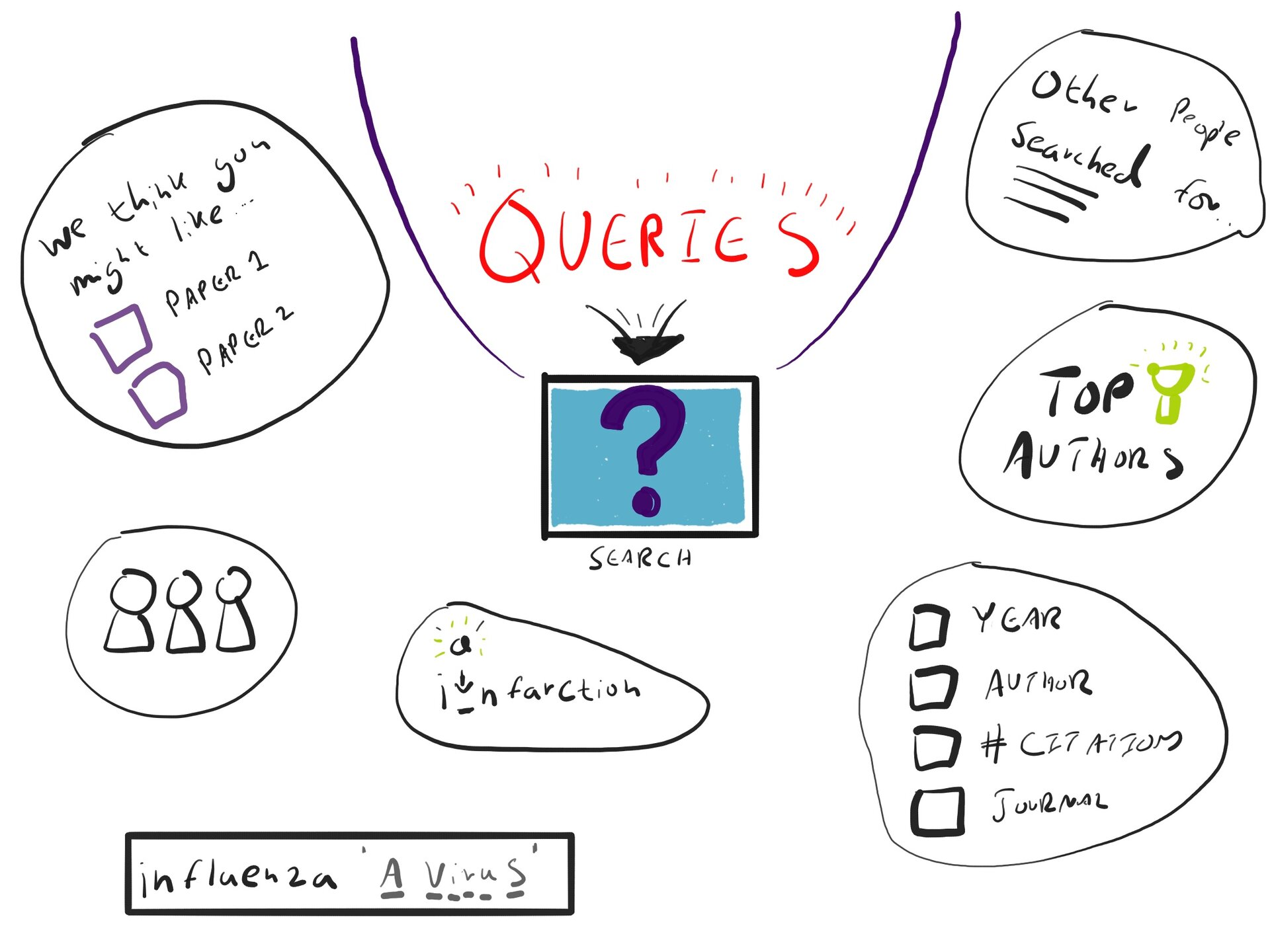
Query architecture
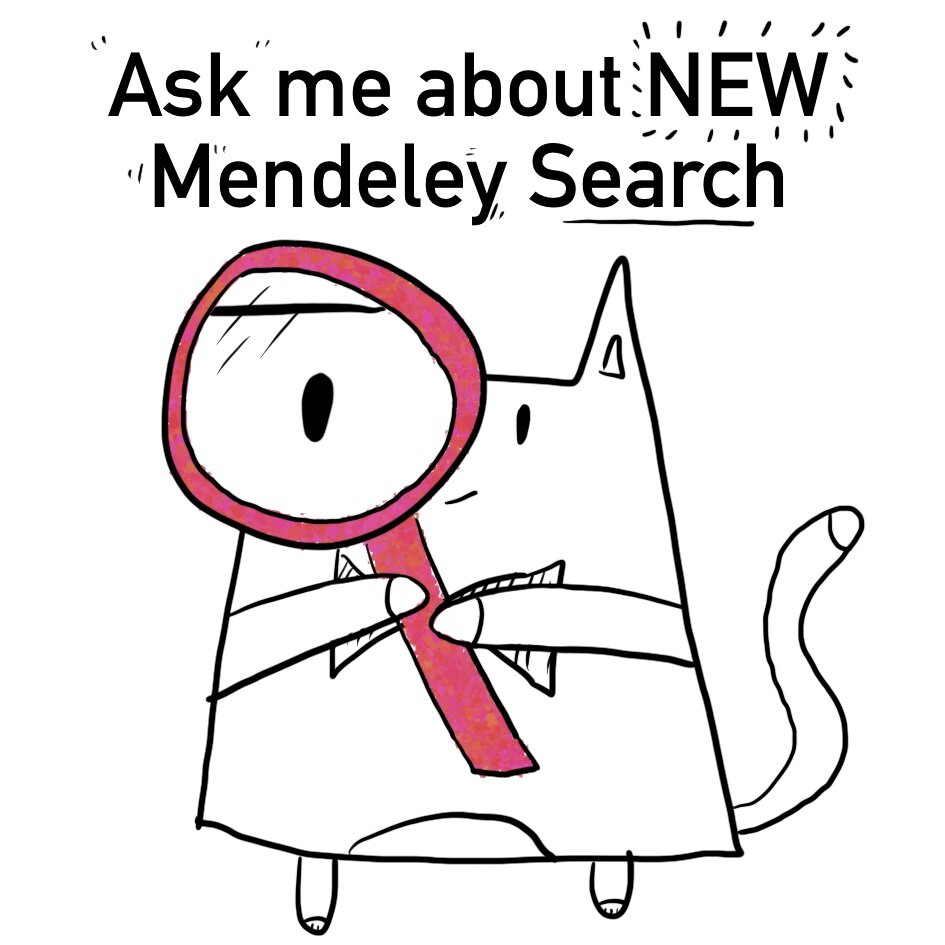
Team culture
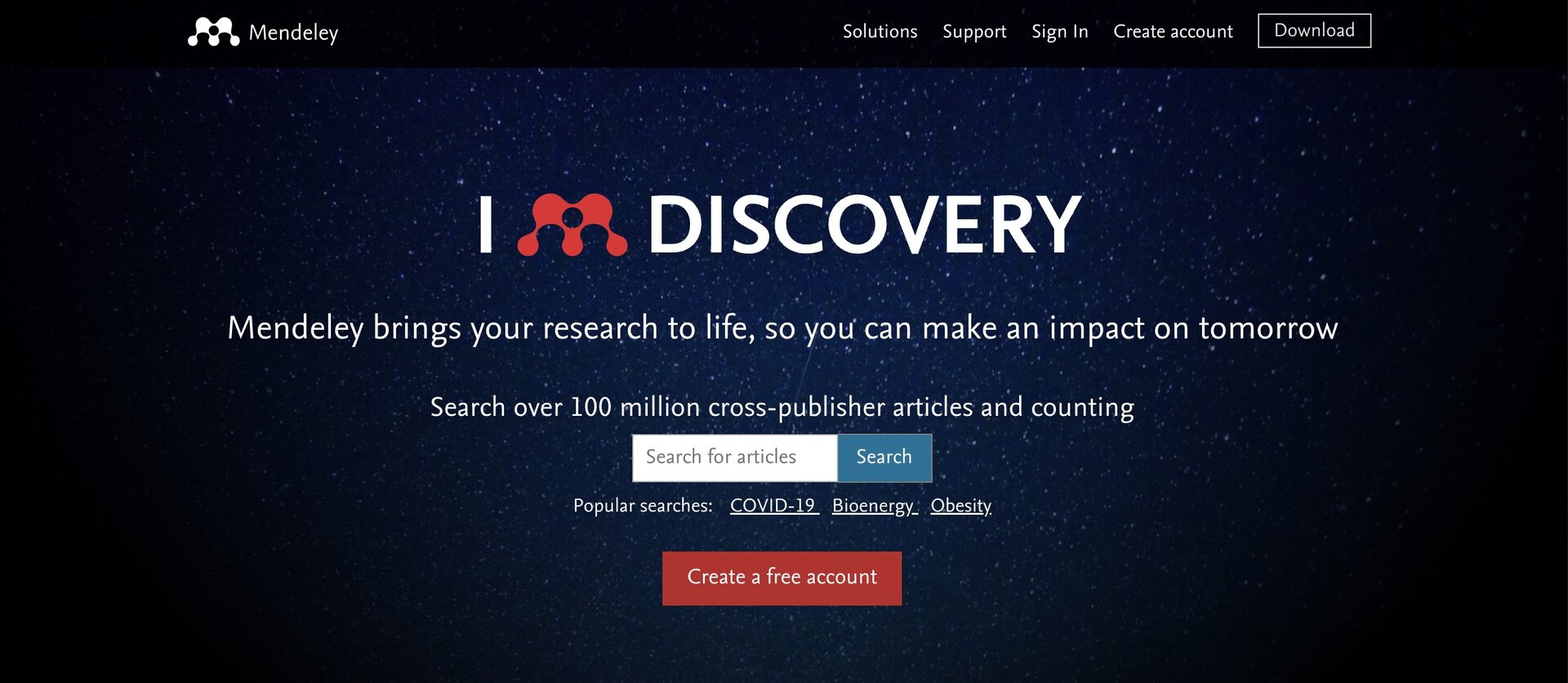
The redesigned homepage
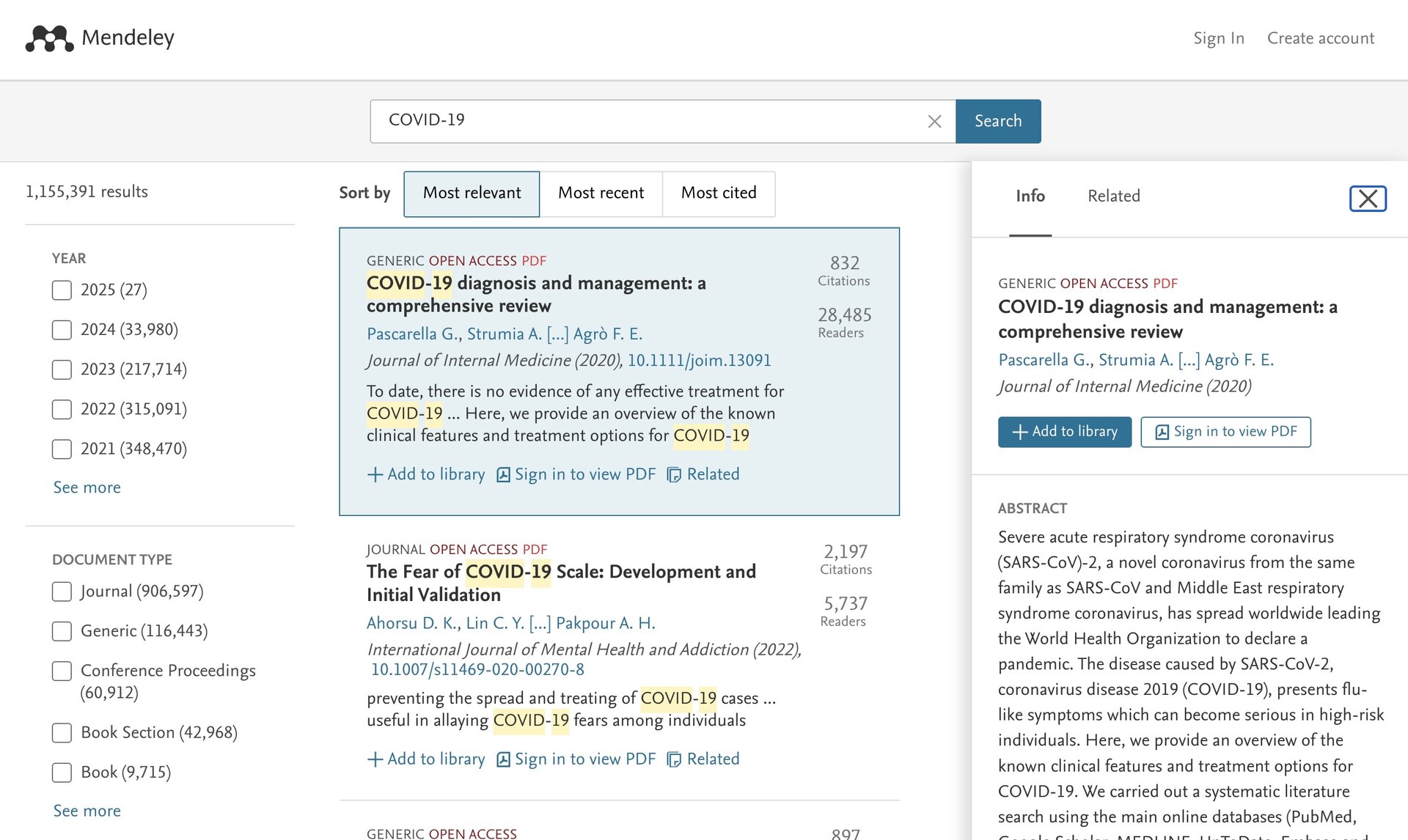
The final search experience
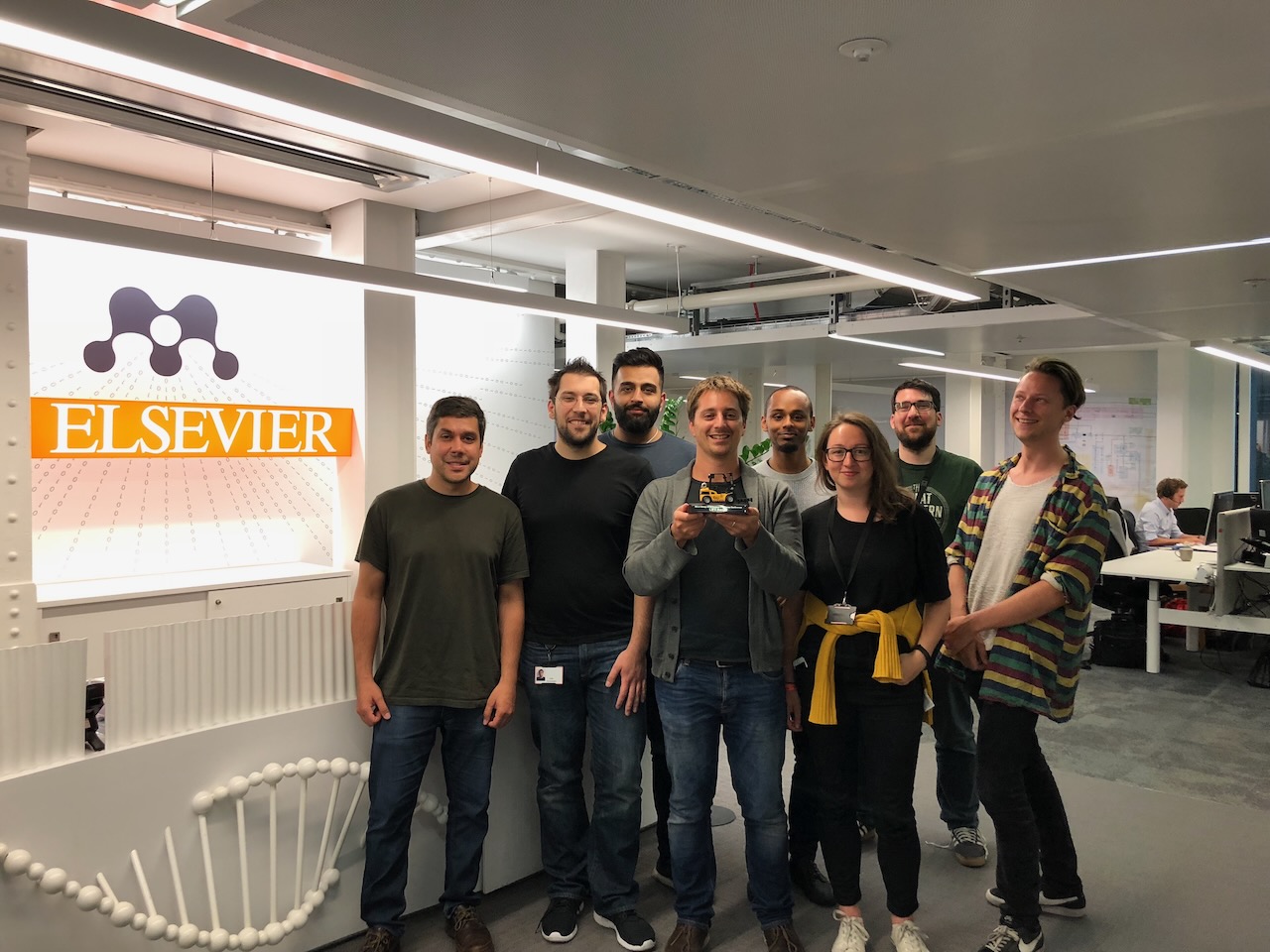
Celebrating failures and successes with the Mendeley team at Elsevier
This experience taught me everything: understanding user behaviour, measuring product success, identifying real needs versus assumed ones. Most importantly, I learned how search technologies work — knowledge that would become the foundation for everything I'd build with AI later.
From GPT-2 Experiments to Scopus AI
Today, I'm Principal Product Manager at Elsevier, where I work on Scopus AI. I built the original prototype that became the foundation for the platform. The goal remains the same as it was in medicine: help people access the knowledge they need to do their most important work—whether that's finding a cure, understanding our climate, or expanding human understanding.
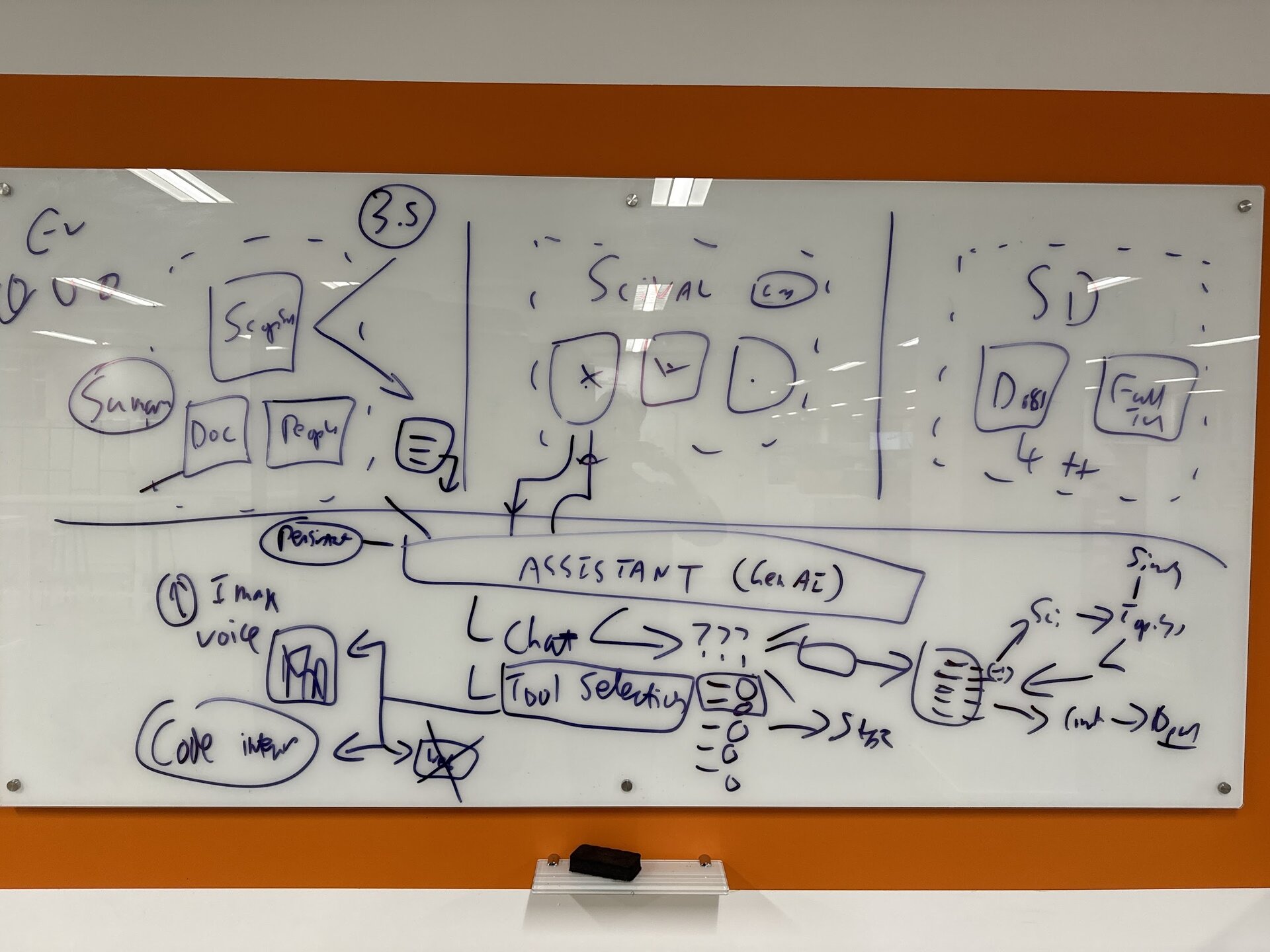
Early AI architecture planning
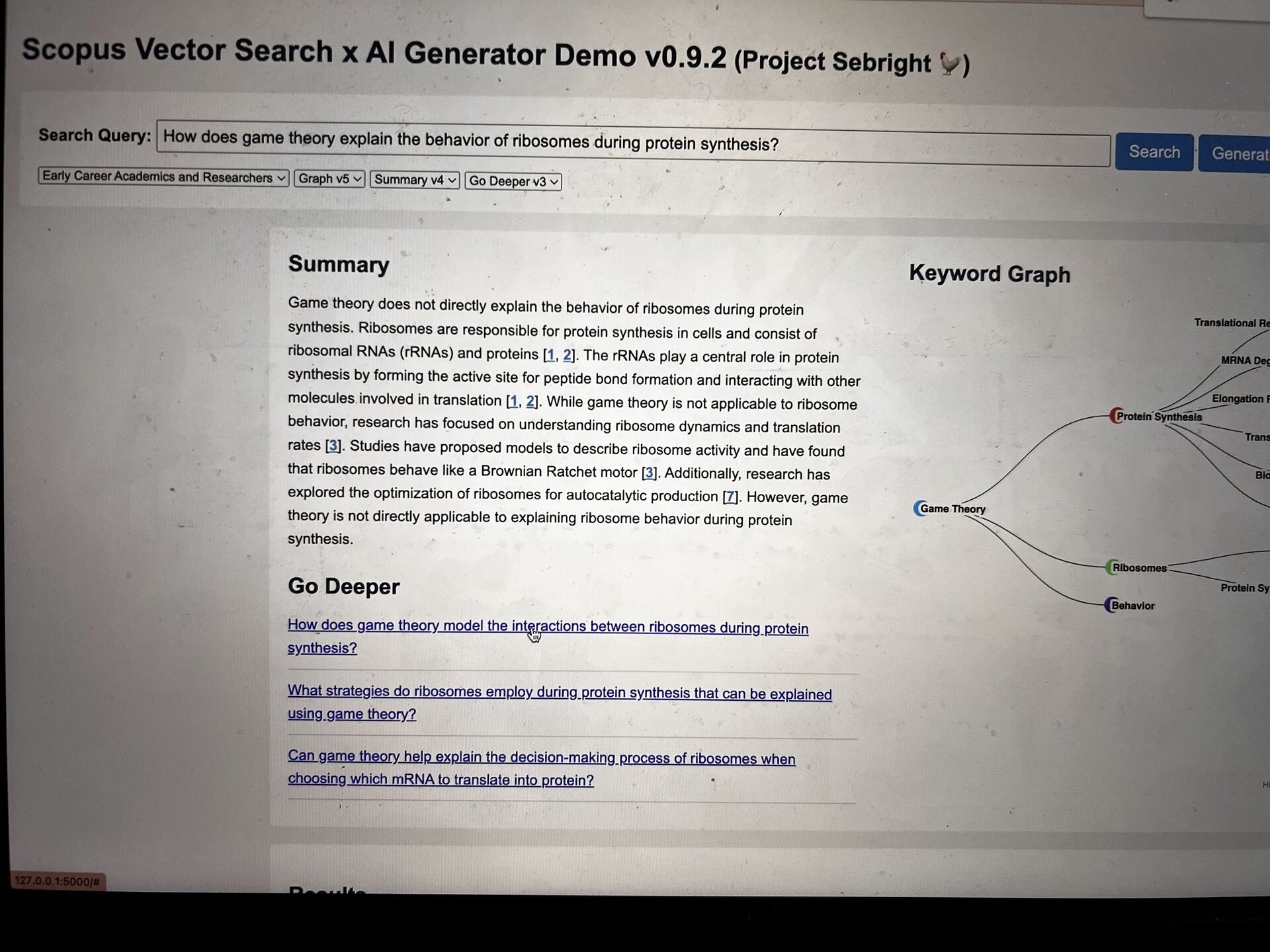
Project Sebright - early prototype
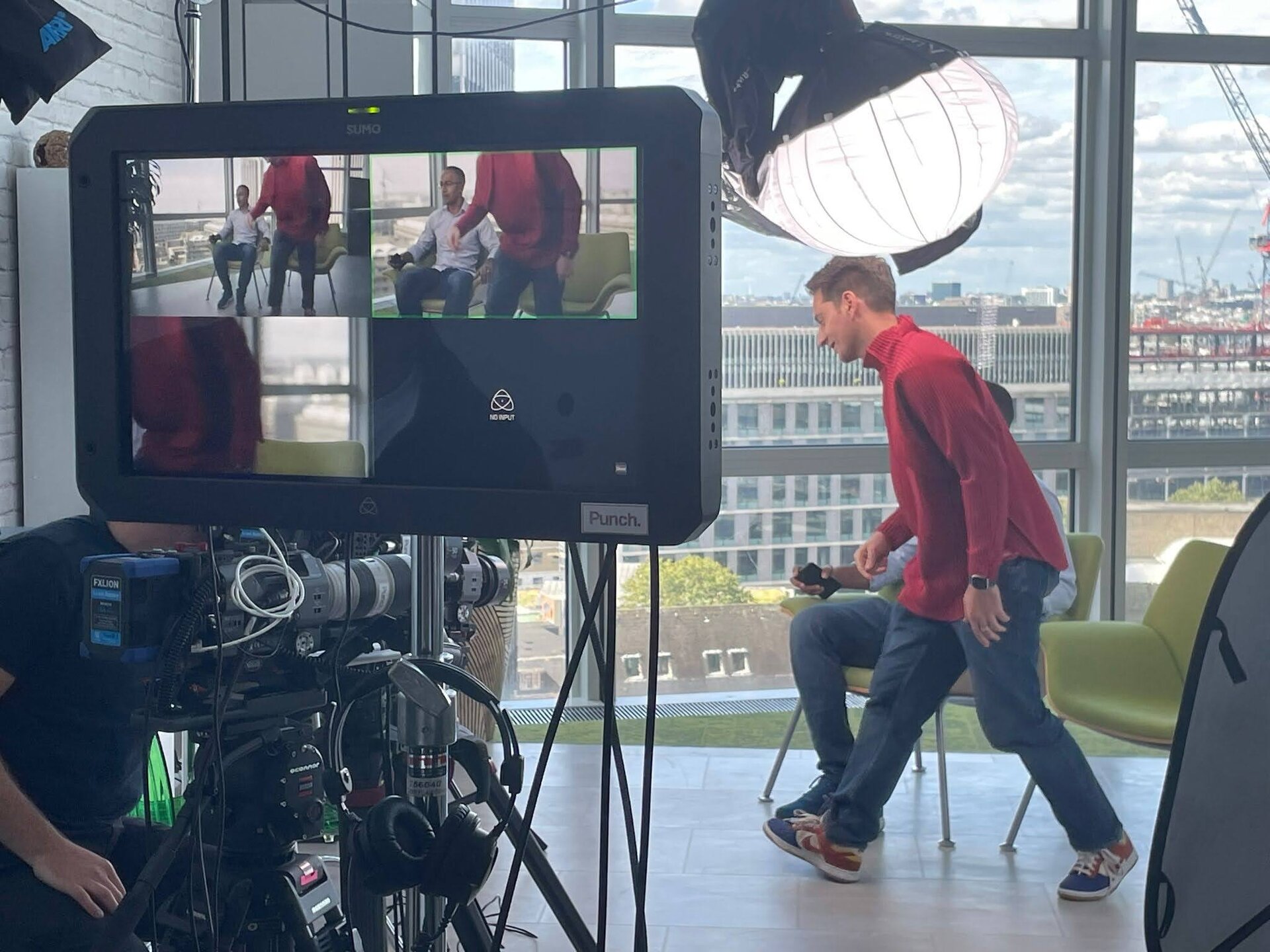
Sharing the Scopus AI story, 2023
From early GPT-2 experiments in 2020, when most thought betting on large language models was risky, to building the Scopus AI prototype, I've focused on making AI genuinely useful for people doing real work. Along the way, I've filed patents in retrieval-augmented generation and worked on frameworks for AI transparency and ethics—because researchers need to trust the tools they use.
The guiding principle hasn't changed since medicine:
"Define what good looks like before you build. Listen first, test carefully, and never forget who you're serving."
Side Projects and Writing
I like learning by making, whether through side projects or writing. A few favourites:
- Forget RAG, the Future is RAG-Fusion — my quirky deep dive into search reliability.
- How to Use Tarot Cards for Sprint Planning — surprisingly practical.
- When Life Gives You Cream Crackers, Make Lemonade — philosophy disguised as nonsense.
- The Curse of Success — why failure might be life's best-kept secret.
I've also experimented with medical games, 3D scanning, and gamified education tools. These projects remind me that creativity and play often lead to the best insights.

Me as a character in one of my 2D games
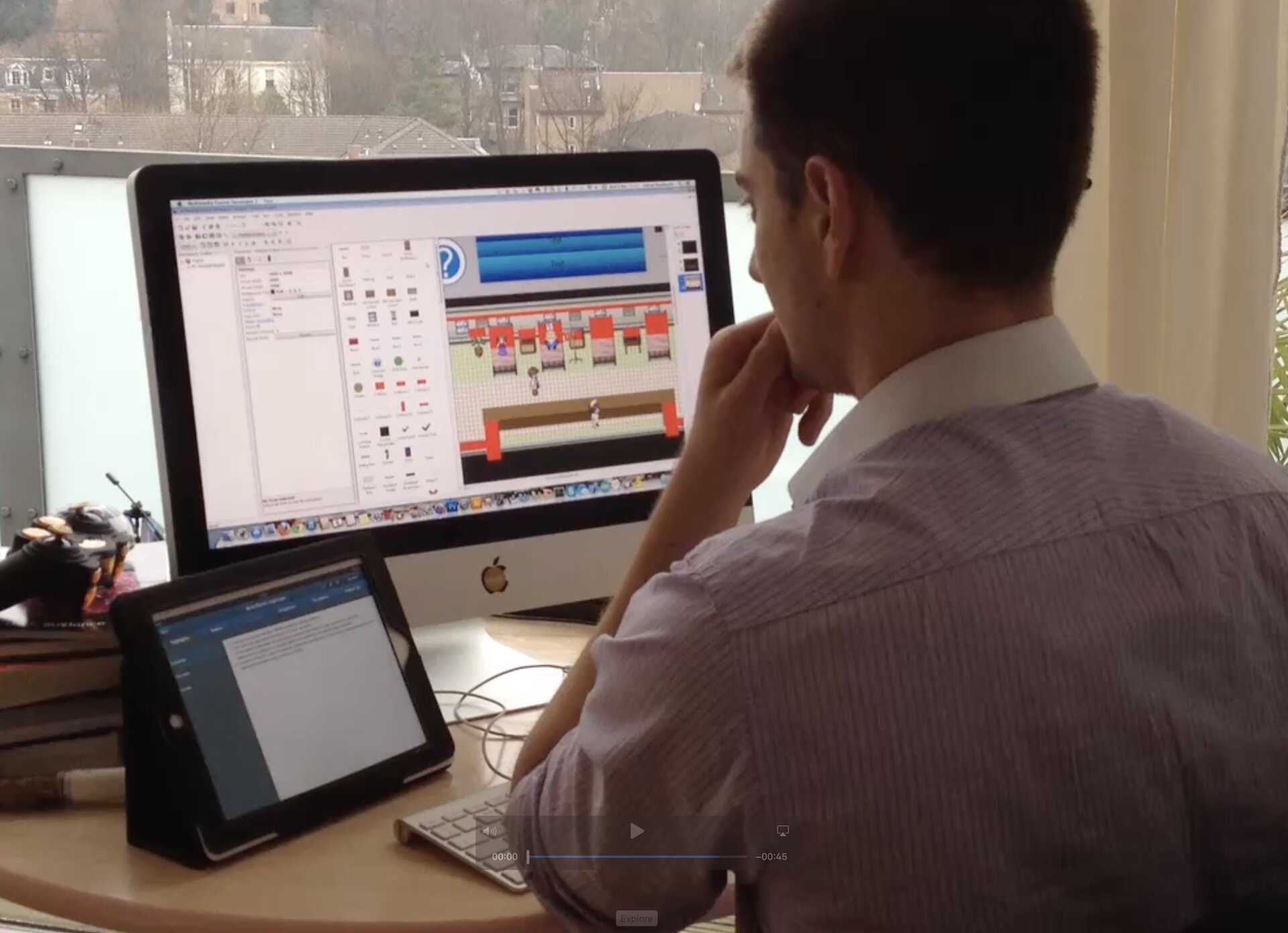
Deep in development of the Ward Round adventure game, 2013
IAM46 - Live heart rate tracking from Apple Watch, 2015
When I'm Not Building Products

Playing Return of the Jedi at the arcade
When I'm not building products, you'll usually find me:
- Wrestling with my chaotic V60 coffee ritual (see evidence below).
- Lost in Terry Pratchett novels or biographies — avid reader, constant learner.
- Managing my extensive Obsidian knowledge graph — years of thoughts, readings, and reflections interconnected.
- Sketching and drawing — comics to explain AI, random doodles, visual thinking.
- Hiking or running with music too good to pause.
- Exploring odd UK traditions like cheese-rolling or solstice festivals.
The chaotic V60 ritual in action
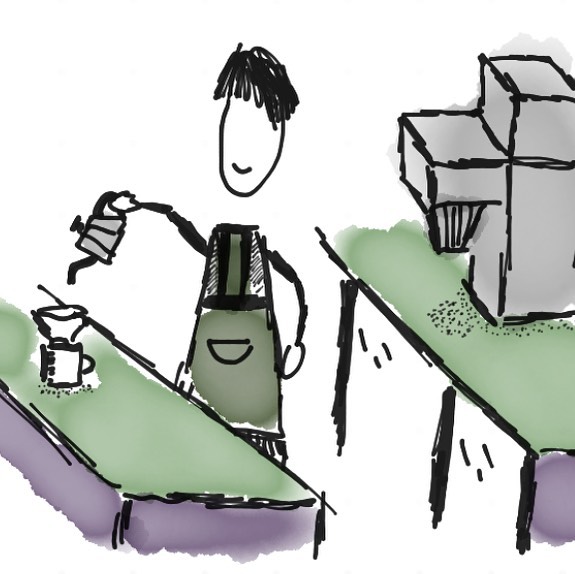
Adrian the Philosophical Barista
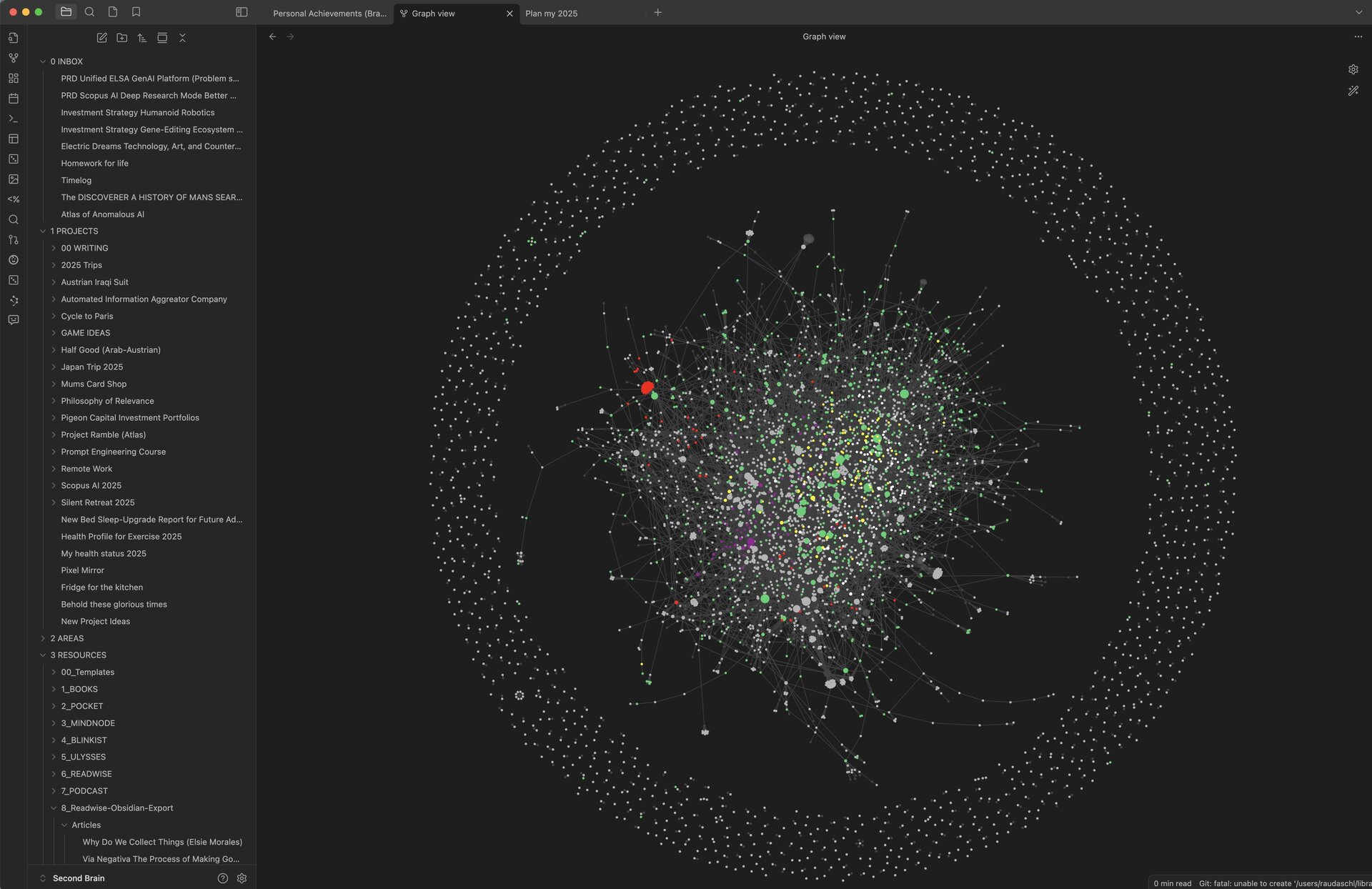
My Obsidian knowledge graph — connecting years of insights
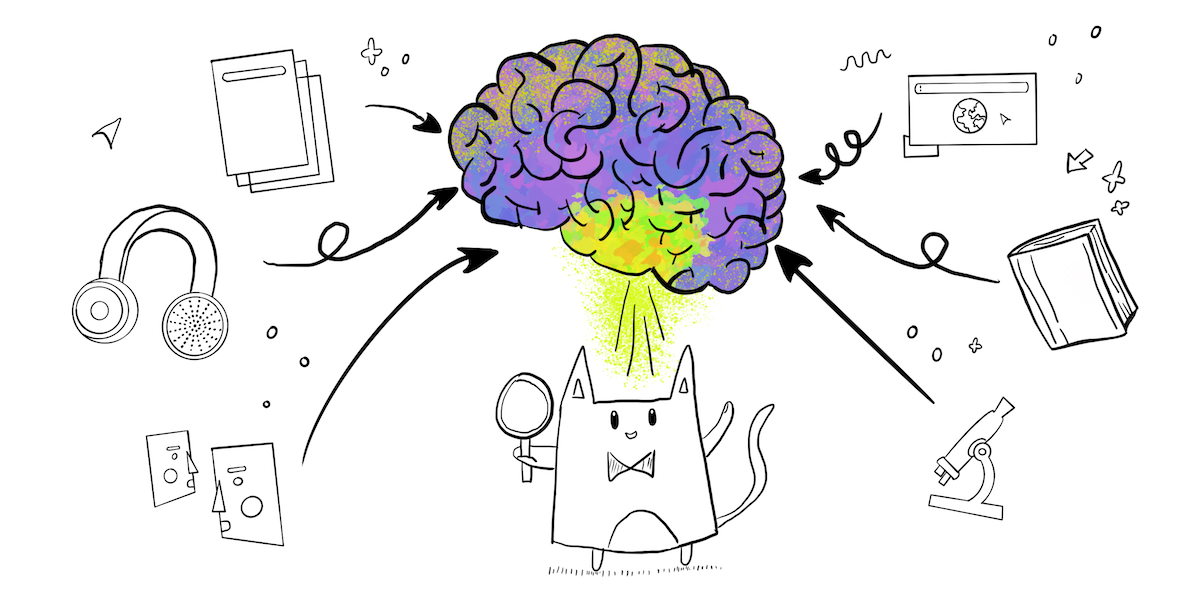
Cartoon cats make better sense of complex concepts
My approach to knowledge is like my approach to coffee: methodical, slightly obsessive, and always evolving. The Obsidian vault helps me connect ideas across years of reading and thinking — from Terry Pratchett's wisdom about human nature to biographical insights about innovation. It's my external brain, helping me write, reflect, and occasionally remember where I left that brilliant idea from 2019.
If tech ever stops working out, you'll find me as Adrian the Philosophical Barista, overthinking your coffee order while discussing GNU Terry Pratchett headers in web protocols.
How It All Fits Together
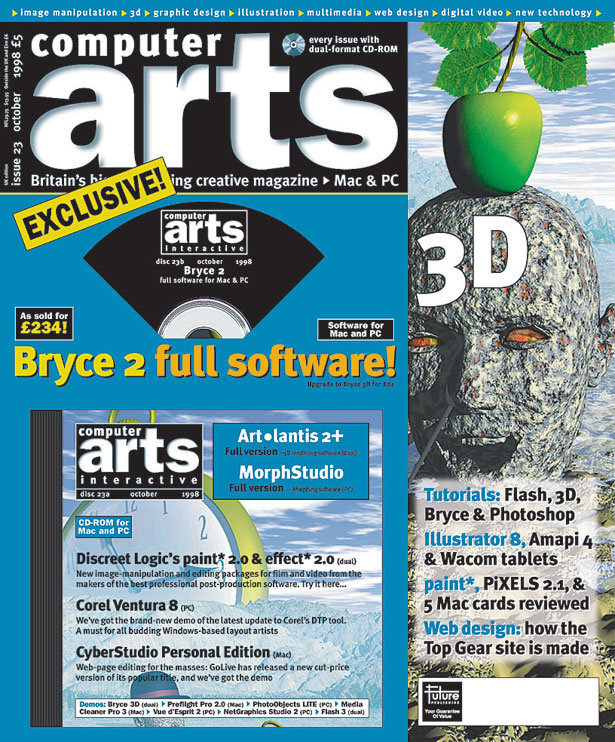
Early 2000s: 3D art
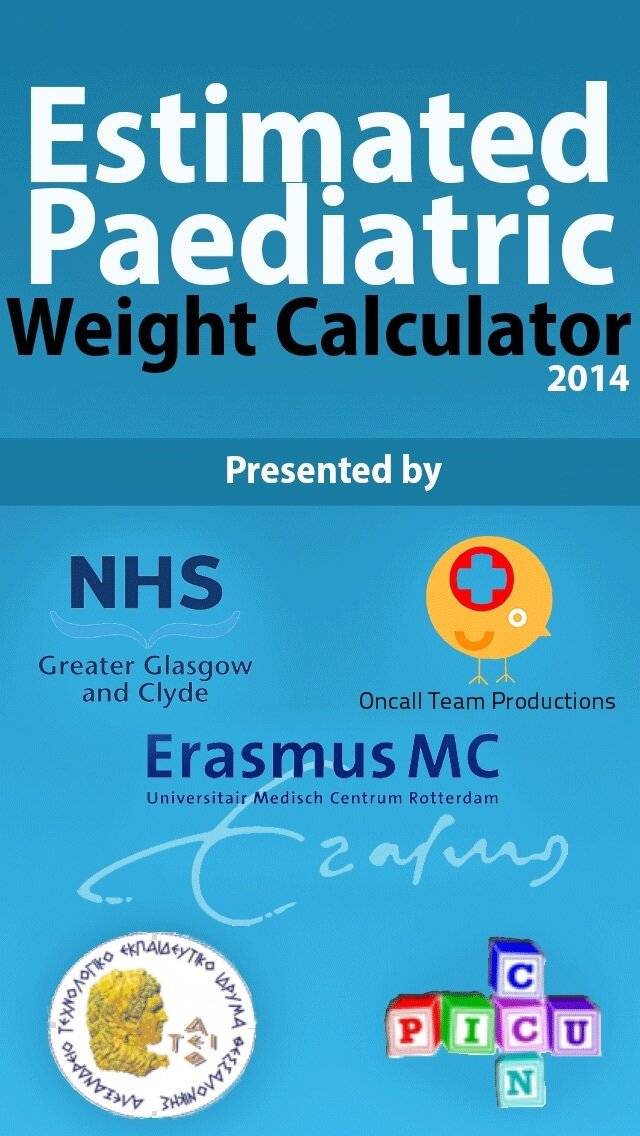
2011: Medical calculators
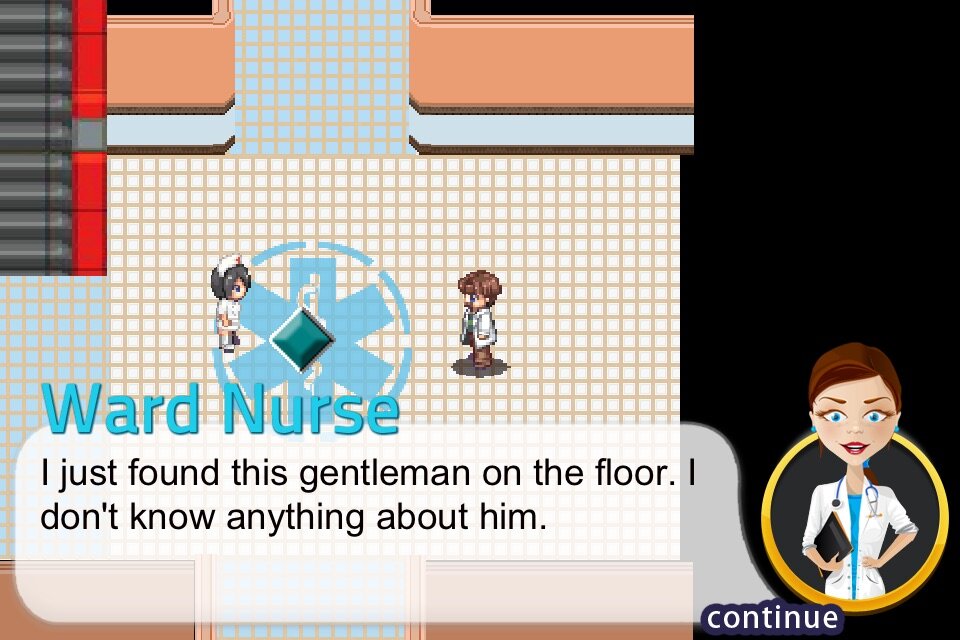
2012: Gamified education
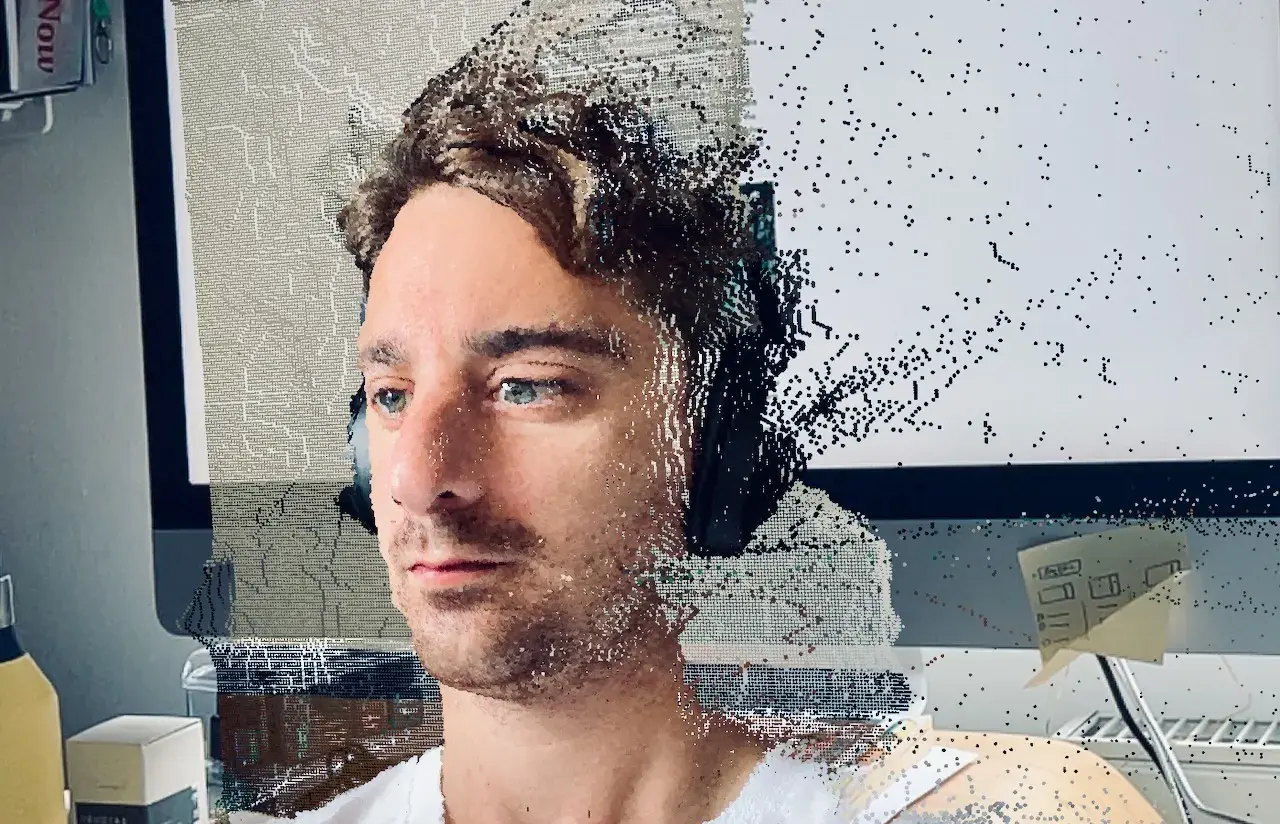
Today: AI & innovation
A Few More Things
Behind the Scenes
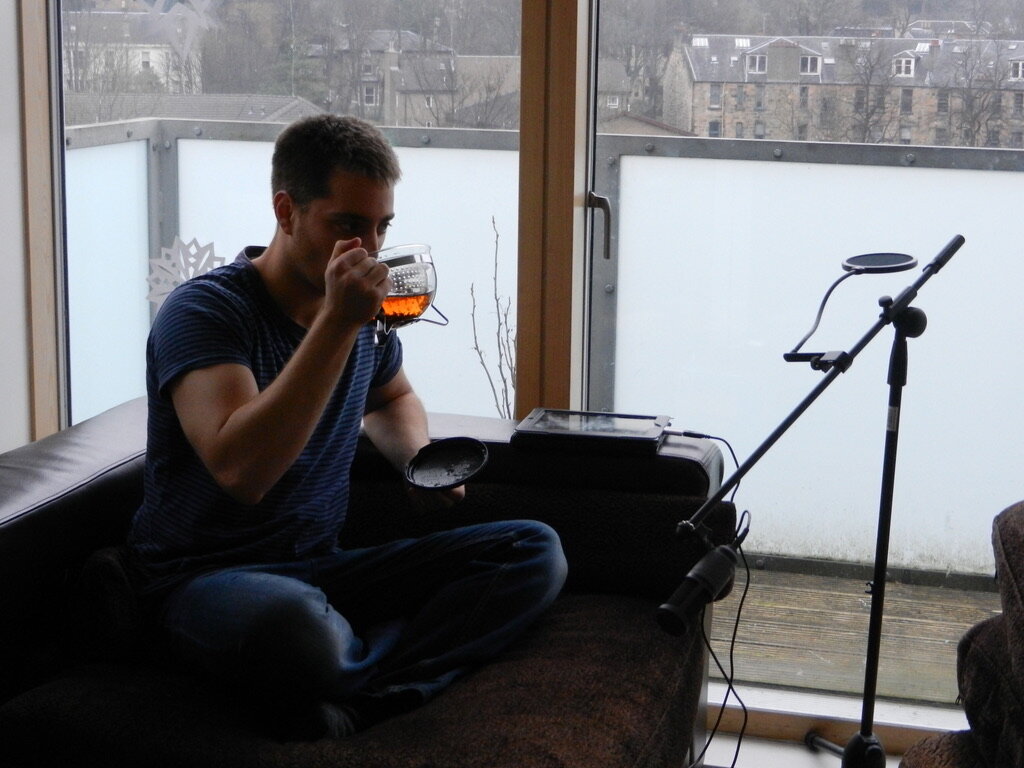
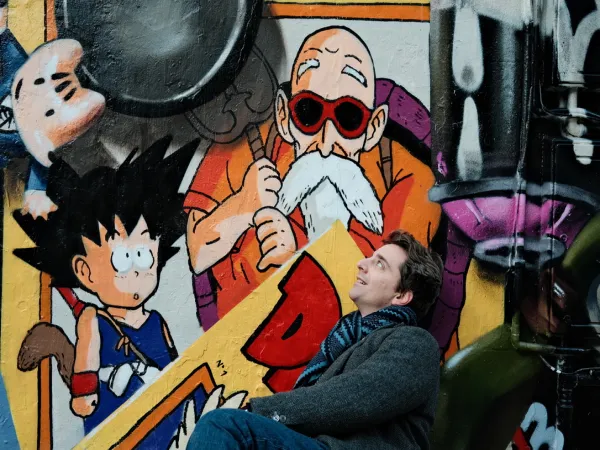
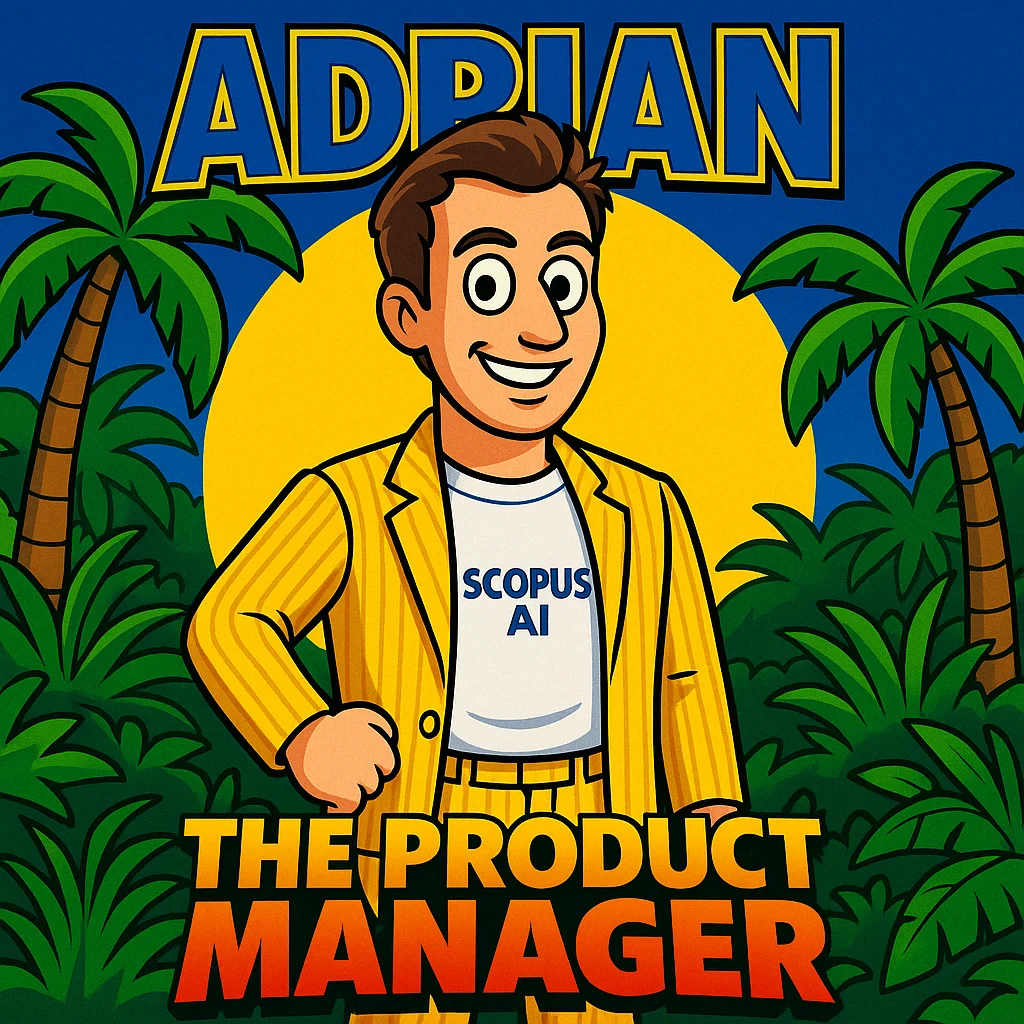
Early Creator Days
Before medicine and product management, I was a kid with coloured pencils and a stack of notebooks. I was obsessed with Sonic the Hedgehog — not just the games, but the whole universe and style. I'd spend hours creating my own characters, inventing backstories, designing levels on graph paper. This wasn't just fan art; it was world-building, narrative design, and my first taste of creating experiences for others.
"That love of creating never left. Today, I channel the same energy into building products that aim to help millions of people."
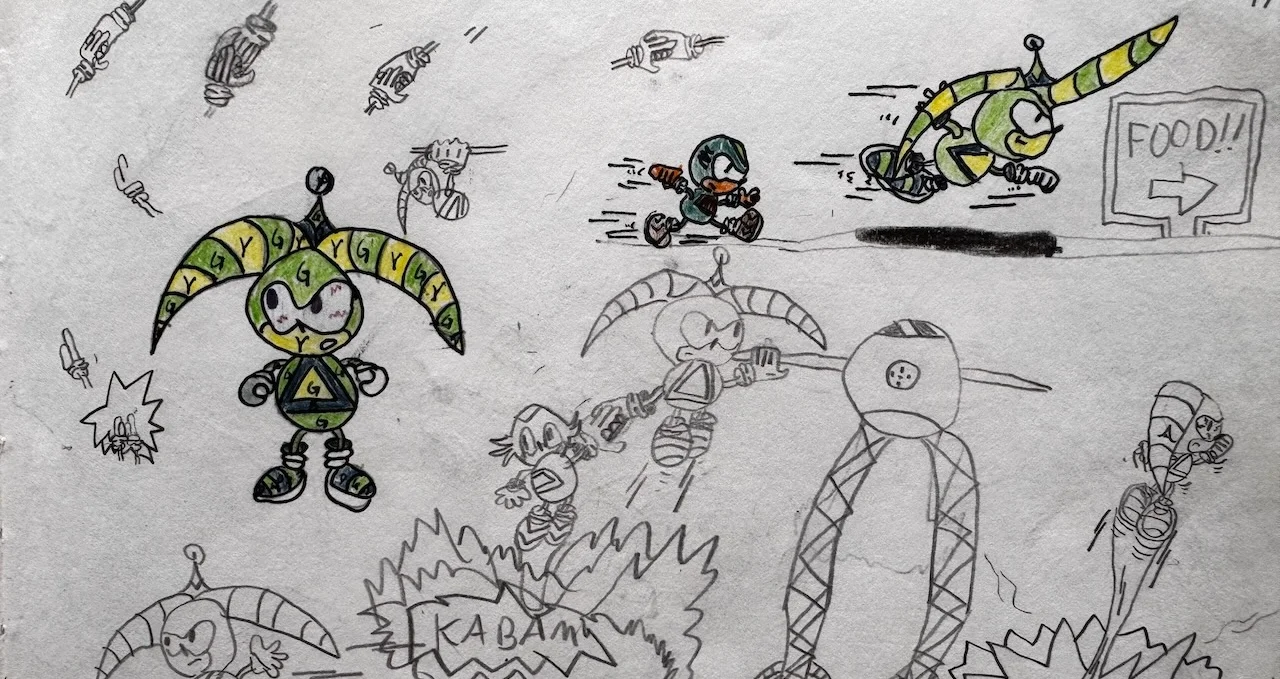
My childhood Sonic-inspired character designs
Fashion Adventures
I'm also a bit of a fashion geek. Clothes, to me, are storytelling you can wear. Sometimes I experiment too much — like the time I walked out in a blue outfit that made me look like an extra from Dune. Or when I decided working from home was the perfect excuse to embrace my inner T-Rex.
"Fashion is just another form of design thinking — except the user is yourself and the use case is self-expression."
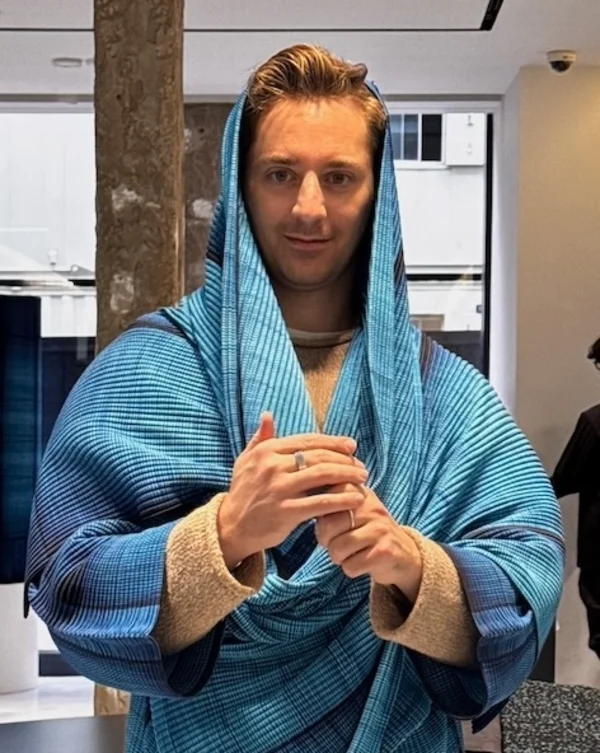
The Dune phase
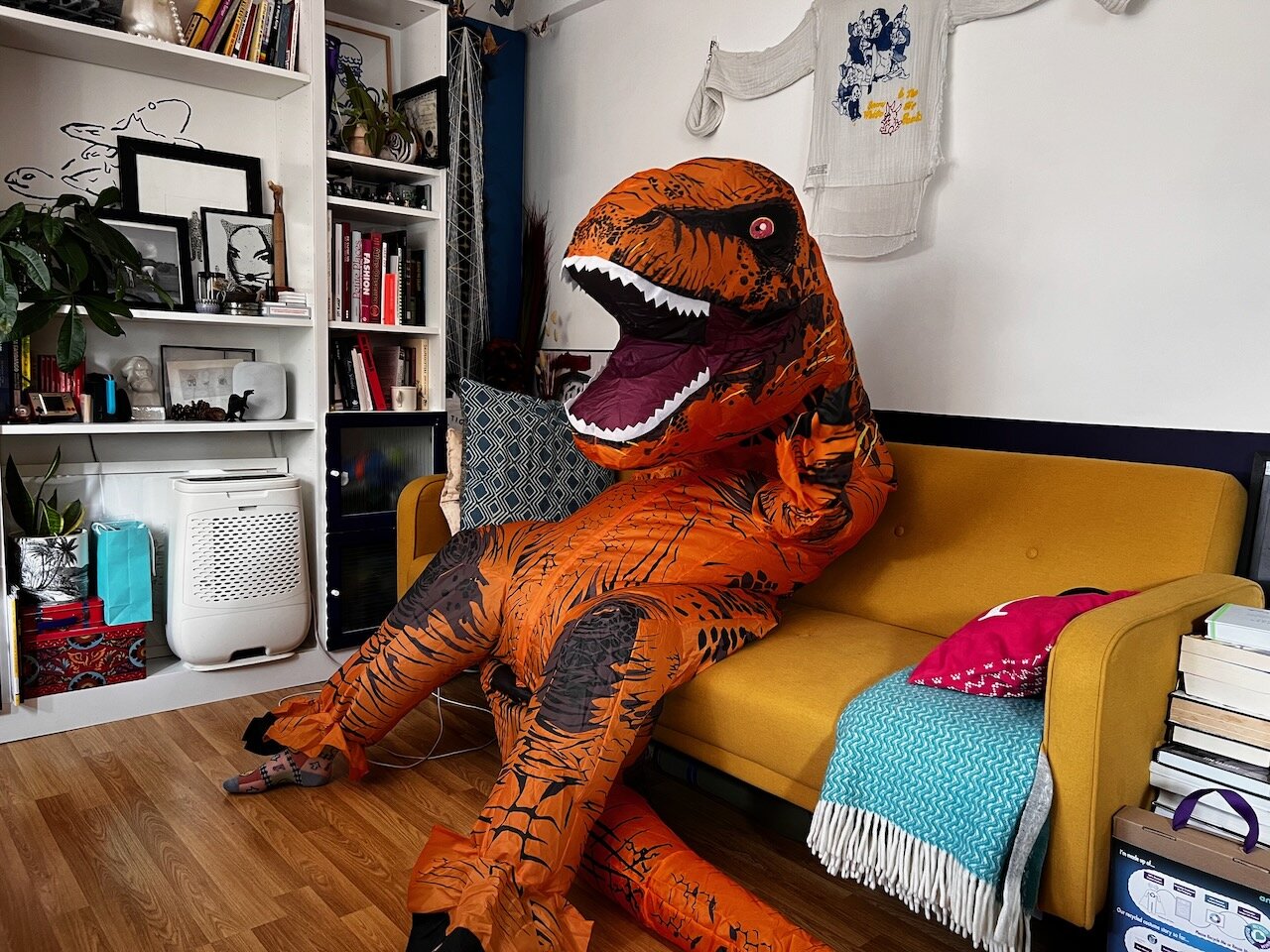
WFH attire level: expert
